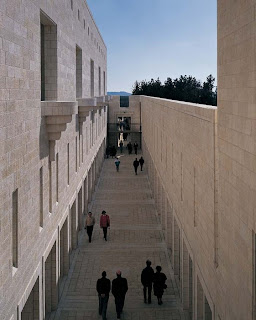Police charged two men Monday night in connection with an Irish-record robbery in which a gang forced a Bank of Ireland employee to steal millions from his own employer _ or risk having his family executed.
Sgt. Jim Molloy of Ireland's national police force declined to identify the two men pending their arraignment Tuesday in Dublin District Court.
The pair were among seven people arrested Friday in the immediate wake of the euro7.6 million ($9.5 million) heist at a Bank of Ireland branch in central Dublin. Police said they released two other men without charge Monday, while two men and a woman were still being interrogated.
Earlier, police revealed how the targeted bank worker, 24-year-old Shane Travers, was able to walk into his workplace at sunrise Friday and leave with four bags stuffed with cash without being stopped by colleagues. They said the gang that kidnapped his family supplied him with photographs of his loved ones bound and gagged _ and also photos of his work colleagues and their own homes.
Police confirmed that during Friday's arrests they recovered euro1.8 million ($2.25 million) of the funds taken from Bank of Ireland, the nation's second-largest bank.
Friday's robbery was by far the biggest in the Republic of Ireland, where no previous robbery topped euro4 million ($5 million).
Senior police and bank security chiefs held talks Monday morning to discuss the painful lessons from the bank heist. The meeting at Ireland's national police force headquarters in Dublin involved Assistant Commissioner Mick McCarthy, police specialists in bank security and the security chiefs of several Irish banks, including Bank of Ireland and the nation's largest bank, Allied Irish.
Police Superintendent John Gilligan said the bank representatives had agreed to conduct an industrywide investigation into making their bank safes less vulnerable to their own employees.
The Bank of Ireland raid began Thursday night, when six armed, masked gang members raided Travers' rural home west of Dublin. They tied up his partner Stephanie Smith, her 5-year-old son and her mother, then took Polaroid photos of them for Travers to show to colleagues when he arrived for work the next morning.
Crucially, gang members also gave Travers photographs of his co-workers and their residence to demonstrate that the gang knew all about the branch's security staff _ and could come after them and their families if they didn't let Travers clean out the vault.
Travers' partner, her son and mother were left in an abandoned van north of Dublin but managed to work themselves free and raise the alarm, more than an hour after Travers had delivered four cash-packed bags to a gang member at a train station's parking lot.
Justice Minister Dermot Ahern has criticized the Bank of Ireland branch staff for failing to alert police until after Travers had already left with the cash. Irish policy requires bank officials targeted by hostage-taking gangs to notify police beforehand, so undercover officers can set up surveillance operations.
Such robberies _ called "tiger kidnappings" because gangs can spend months stalking their "prey" in banks and other cash-intensive businesses _ are regular occurrences in Ireland. The robbers exploit the fact that, while banks can impose the toughest security measures, they cannot prevent their own workers from being coerced by kidnappers into unlocking or turning them off.
The biggest bank robbery on the island of Ireland was an elaborate "tiger kidnapping" in December 2004 that targeted two Northern Bank employees in the British territory of Northern Ireland. They were forced to hand over 26.5 million pounds (at the time $50 million, euro38 million) from their bank's central Belfast vault.
Police blamed the outlawed Irish Republican Army for that crime, which remains the third-largest cash robbery in world history.
Travers worked in the College Green branch of Bank of Ireland, a tourist landmark in central Dublin. The building housed Ireland's first Parliament in the late 18th century and the ornate chambers of its Senate have been preserved for visitors.
___
On the Net:
College Green pictures and history, http://tinyurl.com/b2xvd9

No comments:
Post a Comment